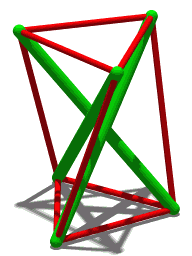
Photo from wikipedia
Abstract A self-adapting structure is proposed in this study to match the driving and clamping signals of piezoelectric inchworm actuators. The excitation signal generated from a pair of opposite type… Click to show full abstract
Abstract A self-adapting structure is proposed in this study to match the driving and clamping signals of piezoelectric inchworm actuators. The excitation signal generated from a pair of opposite type laser photoelectric sensors which detect the positions of the permanent magnets. The proposed actuator can achieve stable motion by matching the clamping force controlled by rotating permanent magnets and the driving force generated by the piezoelectric stack. Simulation on magnetic flux density of the rotating permanent magnet and hysteresis characteristics of the flexible hinge with different thicknesses are conducted to optimize the structure parameters of the actuator. The dynamic model of the actuator is established and a series of experiments are carried out to evaluate the performance of the actuator in terms of resolution, maximum load, maximum output force and repeatability. The experimental results indicate that the actuator achieves maximum output force of 15 g, maximum load of 1100 g and resolution of 0.03 μm in the case of U = 150 V and f = 40 Hz respectively. Moreover, by comparing the theoretical and experimental results regarding the output displacement, it is found that they have the same movement trend. In conclusion, the self-adapting structure contributes to the easy integration of the piezoelectric inchworm actuator, which makes it rather promising considering the stable linear motion performance.
Journal Title: Mechanical Systems and Signal Processing
Year Published: 2019
Link to full text (if available)
Share on Social Media: Sign Up to like & get
recommendations!